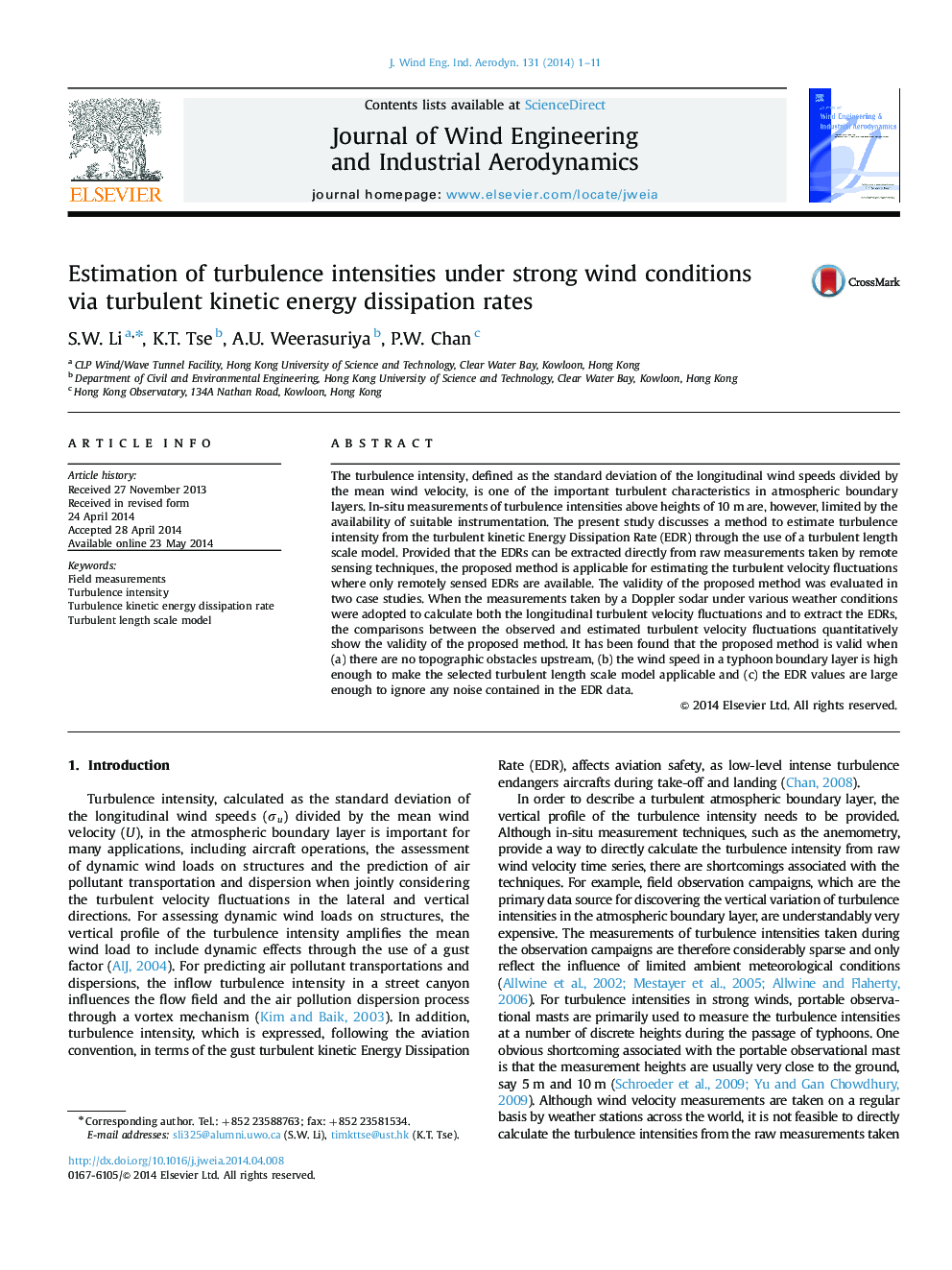| کد مقاله | کد نشریه | سال انتشار | مقاله انگلیسی | نسخه تمام متن |
|---|---|---|---|---|
| 293497 | 511142 | 2014 | 11 صفحه PDF | دانلود رایگان |
• Proposed a method to estimate the turbulence intensity from measurements of turbulent kinetic energy dissipation rates.
• Tested the proposed method based on Doppler sodar measurements taken during the passages of several typhoons.
• Tested the proposed method based on both the Doppler sodar measurements taken in the first three months in 2012 under non-typhoon weather.
• Identified a series of conditions under which the proposed method can be considered valid.
• Conducted a series of sensitivity analysis to show the influence of various model parameters.
The turbulence intensity, defined as the standard deviation of the longitudinal wind speeds divided by the mean wind velocity, is one of the important turbulent characteristics in atmospheric boundary layers. In-situ measurements of turbulence intensities above heights of 10 m are, however, limited by the availability of suitable instrumentation. The present study discusses a method to estimate turbulence intensity from the turbulent kinetic Energy Dissipation Rate (EDR) through the use of a turbulent length scale model. Provided that the EDRs can be extracted directly from raw measurements taken by remote sensing techniques, the proposed method is applicable for estimating the turbulent velocity fluctuations where only remotely sensed EDRs are available. The validity of the proposed method was evaluated in two case studies. When the measurements taken by a Doppler sodar under various weather conditions were adopted to calculate both the longitudinal turbulent velocity fluctuations and to extract the EDRs, the comparisons between the observed and estimated turbulent velocity fluctuations quantitatively show the validity of the proposed method. It has been found that the proposed method is valid when (a) there are no topographic obstacles upstream, (b) the wind speed in a typhoon boundary layer is high enough to make the selected turbulent length scale model applicable and (c) the EDR values are large enough to ignore any noise contained in the EDR data.
Journal: Journal of Wind Engineering and Industrial Aerodynamics - Volume 131, August 2014, Pages 1–11
